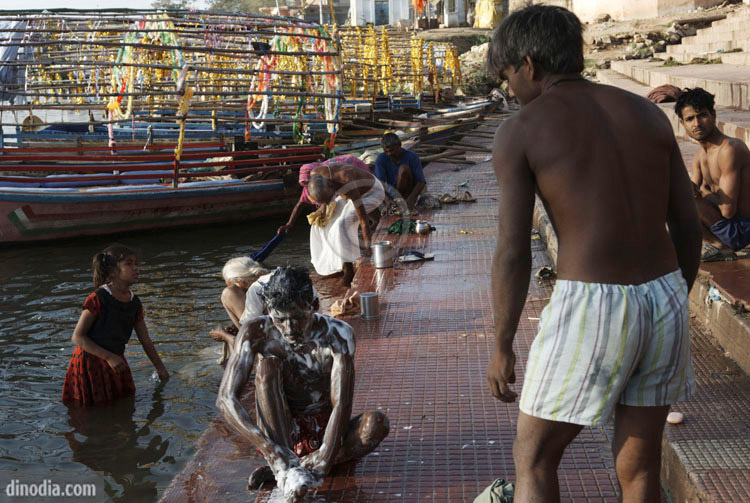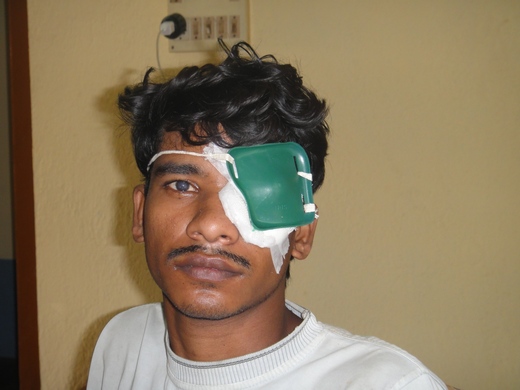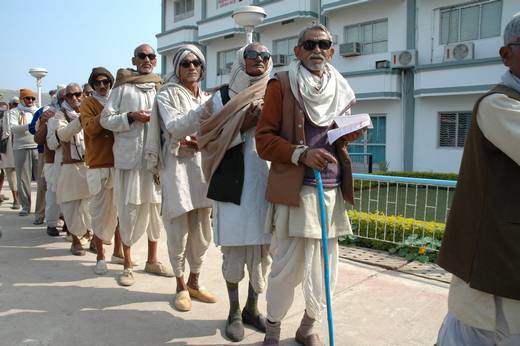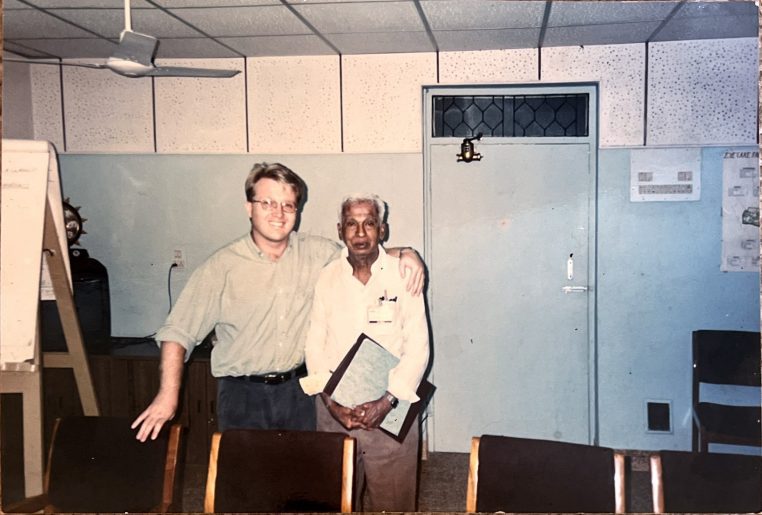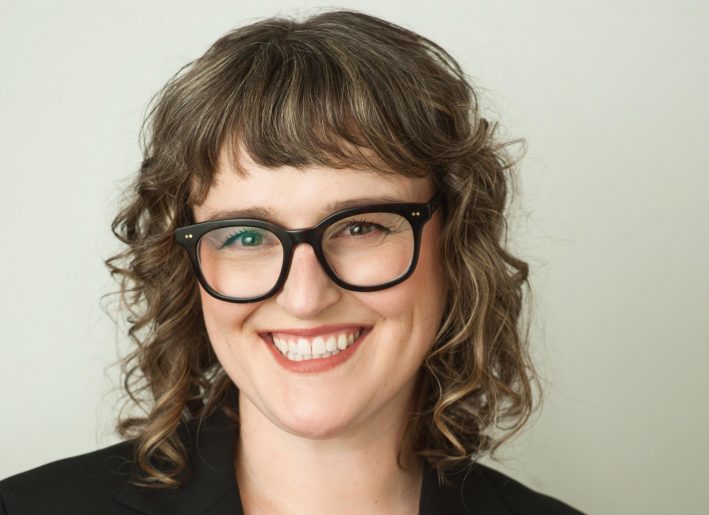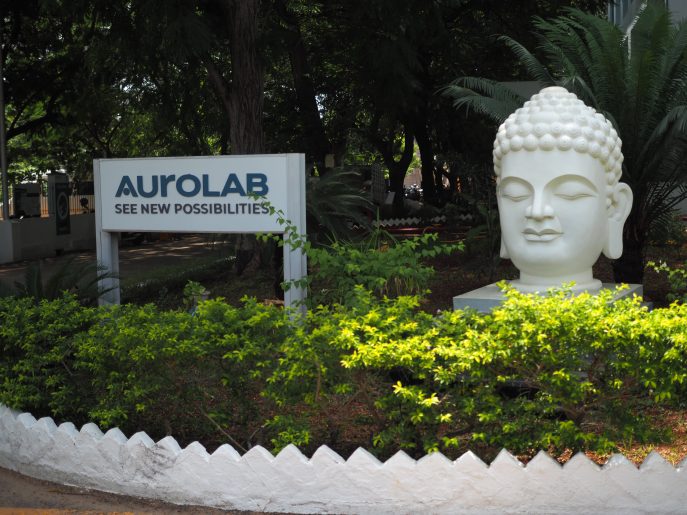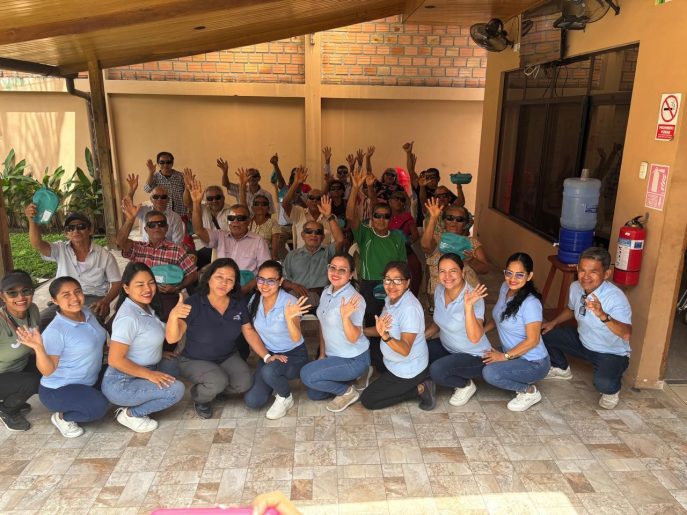Dusk in Chitrakoot, India.
Indians bathing at the Holy Paisuni River
We stand barefoot on steps leading down to the holy river Paisuni, in front of a temple dedicated to Lord Rama. The stairs are crowded with young men dressed all in white, Sanskrit students, and others who have come to give puja as they do every evening. We are brought down to the puja table at the river’s edge, chosen for this honor because we are guests. First blessed with a Tilak on our foreheads, we begin the rituals of honoring the gods. No one seems to mind that we stumble over the words and hesitate in confusion when our participation is required. Devotees around us have taken it upon themselves to help us through the ritual, giving instructions, often conflicting, at every step. The rituals feel ancient, as well worn as the steps we stand on, beautiful, soothing, and perfect under the heavy night sky.
Every four years the International Agency for the Prevention of Blindness conducts a worldwide eye care congress. This year (2012), the congress is in Hyderabad; which is why I am in India. The congress provided an opportunity to visit two long time partners of Seva in Northern India– Sadguru Netra Chikitsalaya (SNC) in Chitrakoot, Madya Pradesh and the second, in Chaitanyapur, West Bengal called the Vivekananda Mission Ashram or VMANN. Both hospitals are in rural and remote areas, both were started by revered religious leaders, and both are operating at a capacity and level of sophistication that belies their location and size. SNC increased the number of cataract surgeries they perform from about 25,000 in 2001 to over 100,000 in 2012. They mentor other hospitals in the region to become productive and financially self-sustaining. In the last year, they trained over 200 eye health care workers from ophthalmologists to counselors and they are continually conducting research to ensure the care they provide is not only high quality but also reaches those most in need.
VMANN, while smaller, is equally impressive. With a staff of 10 ophthalmologists, they perform 18,000 cataract surgeries annually. They have a school for the blind and a low vision program that is more comprehensive than many in much larger institutions. VMANN mentors hospitals in West Bengal and Bangladesh. We met a young man at VMANN who had just received a corneal transplant.
Mangobinda Pal photo courtesy of Penny Lyons
Mangobinda Pal was blind in both eyes from macular dystrophy, a type of corneal scarring that eventually leads to blindness. At 18 he married a young woman from his village of Kakkhuty Do – she was 15. They weren’t married long before the corneal scarring became so severe that Mangobinda was completely blind – he was 19. His wife, distraught about her husband’s condition and his inability to provide for them, committed suicide. Mangobinda’s father-in-law told us this story. He told us how, after his daughter committed suicide, he made it his life’s mission to find help for his son-in-law.
They spent four years searching for a hospital that could do a corneal transplant but either corneal surgery was not available or it was far too expensive. A family member recommended VMANN because he had cataract surgery there. Not only did VMANN have the expertise, but they also provided the surgery for free. Dr. Subhra Sil performed the surgery. Mangobinda stayed Chaitanyapur for a week to recover and will return to VMANN within 6 months for follow-up. If the hospital has a surplus of corneas this year he will have his second cornea replaced. Donations of corneas (or any other organs) are uncommon in India so those who are blind in both eyes have first priority.
We asked Mangobinda what he plans to do now that his sight has been restored. His dreams are simple: he wants to work to support himself and the family he has left. He wants to repay his father-in-law for the kindness he has shown him.
Today we fly to Hyderabad for the congress. I am certain the meetings will be informative, interesting and possibly even inspiring but I suspect nothing I hear or see will be as important or relevant to my work with Seva as meeting Mangobinda.
Photo courtesy of Brian Harris
